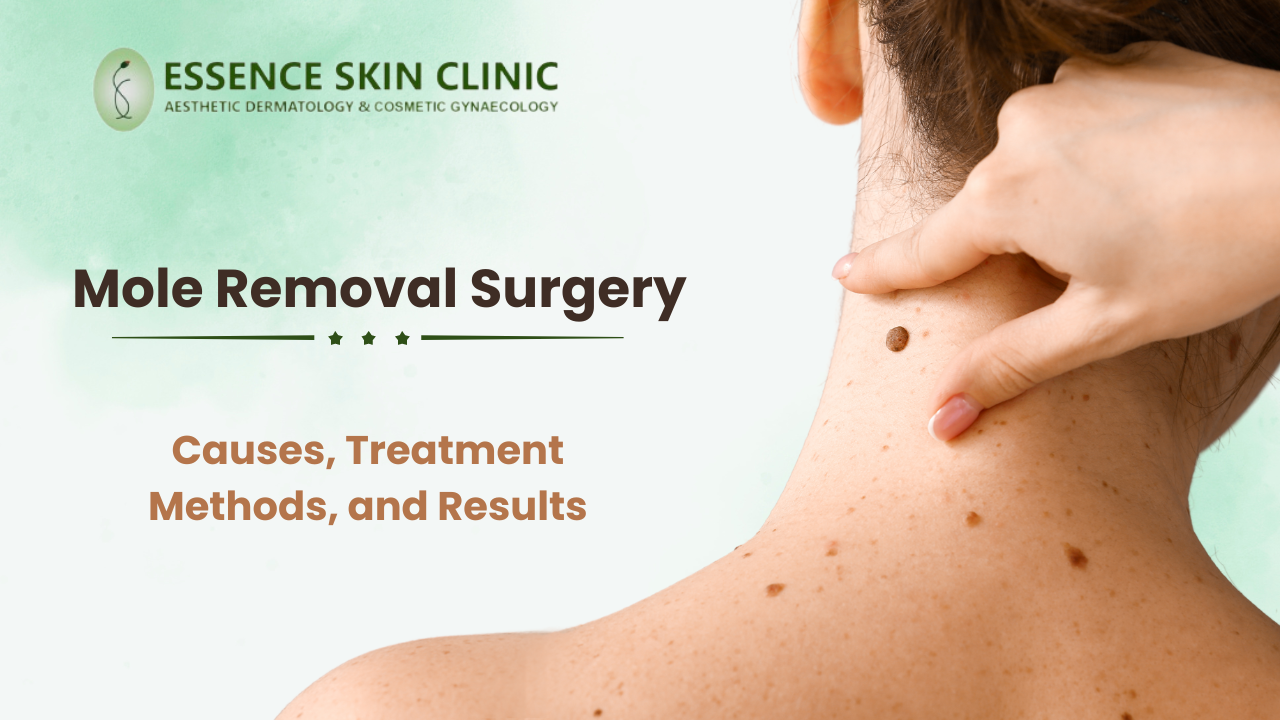

September 27, 2024

Mole removal surgery has become increasingly common as individuals seek to enhance their appearance and ensure their skin health. While moles are typically harmless, certain factors may prompt their removal. In Guwahati, the demand for mole removal surgery is growing, driven by advancements in medical technology and increased awareness of skin conditions. This article explores the causes of mole formation, various treatment methods, and the results you can expect from mole removal surgery.
Causes of Mole Formation:
Moles, or nevi, are common skin growths that can vary in color, size, and shape. They are usually benign, but several factors contribute to their development:
1. Genetics: A family history of moles increases the likelihood of developing them. If your parents or siblings have many moles, you may be predisposed to the same condition.
2. Sun Exposure: Prolonged exposure to ultraviolet (UV) rays from the sun can lead to the formation of new moles. UV radiation stimulates melanocytes, the cells responsible for producing melanin, resulting in darker patches on the skin.
3. Hormonal Changes: Hormonal fluctuations, particularly during puberty, pregnancy, or menopause, can lead to the appearance of new moles or changes in existing ones.
4. Skin Type: People with fair skin are more susceptible to developing moles. Those with a lighter complexion tend to have fewer protective pigments, making them more vulnerable to UV damage.
While most moles are harmless, certain characteristics may indicate a need for removal. These include changes in size, shape, or color, as well as itchiness or bleeding. If you notice any of these signs, it’s essential to consult a dermatologist.
Treatment Methods for Mole Removal:
There are several effective methods for mole removal surgery in Guwahati, each with its own advantages and suitability based on the mole’s characteristics and the patient’s preferences. Here are some common treatment options:
>> Surgical Excision: This method involves cutting out the mole and a small margin of surrounding skin. It is ideal for larger moles or those suspected to be cancerous. The procedure is typically performed under local anesthesia, and stitches may be required.
>> Shave Excision: In this technique, the mole is shaved off at skin level using a surgical blade. It’s less invasive than surgical excision and is often used for raised moles. This method usually does not require stitches, but there may be a small risk of regrowth.
>> Laser Removal: Laser therapy uses concentrated light beams to target and break down the pigment in the mole. This method is effective for flat moles and is less painful than traditional surgical methods. Laser removal typically requires multiple sessions for optimal results.
>> Cryotherapy: Cryotherapy involves freezing the mole with liquid nitrogen, causing it to fall off. This method is suitable for small, benign moles and can be performed in a dermatologist's office.
>> Electrosurgery: This technique uses high-frequency electrical currents to remove the mole. It is often combined with other methods, like shaving, to enhance results.
Results and Recovery:
The results of mole removal surgery in Guwahati can vary depending on the method used and individual healing factors. Here’s what you can generally expect:
Minimal Scarring: Most modern techniques aim to minimize scarring. Surgical excision may leave a small scar, but skilled dermatologists can often conceal it effectively.
Healing Time: Recovery times differ based on the removal method. Shave excision and laser removal generally require less downtime than surgical excision. Patients can usually return to their daily activities shortly after the procedure.
Follow-Up Care: Post-surgery, it’s crucial to follow your dermatologist’s aftercare instructions. This may include keeping the area clean, applying topical ointments, and avoiding sun exposure to promote healing and minimize scarring.
Monitoring: Regular follow-up appointments with your dermatologist are essential to monitor the surgical site for any signs of complications or changes in the skin.
Conclusion
Mole removal surgery in Guwahati offers an effective solution for individuals concerned about the appearance of their moles or potential skin health risks. With various treatment methods available, patients can choose the option that best suits their needs and preferences. By understanding the causes of mole formation, the available treatments, and the expected results, individuals can make informed decisions about their skin health. If you're considering mole removal, consult a qualified dermatologist in Guwahati to discuss your options and achieve the best possible outcome.